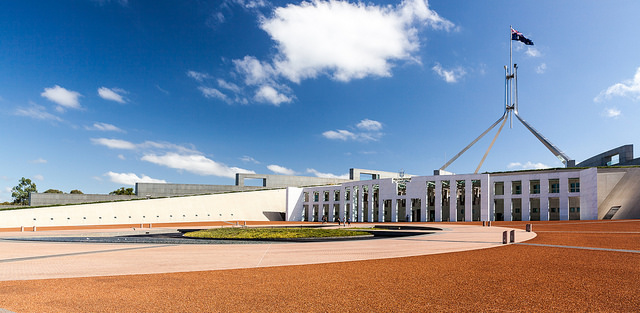Forty-one years ago this week the decision was taken to split the Department of Finance from the existing Treasury.
Then-Prime Minister Malcolm Fraser and his Treasurer, Phillip Lynch, couldn’t get advice on the state of the Budget without the heavy influence of the Permanent Secretary, Sir Frederick Wheeler.
Tensions between the Fraser Government and Treasury came to a head when, in November 1976, Fraser was determined to value the Australian dollar.
But that decision was so opposed by Treasury that they wouldn’t provide more than one tortured and unhelpful paragraph towards the PM’s major policy announcement speech.
Fraser was concerned that his Treasurer was being dragged along with the Department.
He told his staffer and later Howard Government minister, David Kemp: “I am worried about Philip. I think Treasury are badgering him, the bastards.”
The ensuing fallout between the Government and Treasury saw the birth of the Department of Finance just days later.
The intention was clear – the Government wanted to be back in control of the books and it wanted more timely and contested economic advice.
The change was initially purely bureaucratic in nature – the Treasurer still held responsibility for both portfolios. But budgets were now the responsibility of not one but three agencies: Treasury; Finance; and Prime Minister and Cabinet in tandem, all with the opportunity to weigh advice.
Finance’s role has obviously evolved since, but it is not well understood.
It does much of its work behind the scenes; its worth often viewed through a limited or narrow lens; its minister frequently caricatured as one who exists just to say no to colleagues’ spending plans, fix internal problems and robotically recite the Government’s key messages.
Few would realise the role Finance plays in the National Broadband Network, the Clean Energy Finance Corporation, big infrastructure projects, and other government businesses. Fewer still would appreciate the portfolio’s capacity to help inform and drive a Government’s broader economic strategy in tandem with an effective, reforming Treasury and Treasurer.
But with public debt at new record levels and rising, a more active, progressive and entrepreneurial approach to the portfolio is essential.
Central to that new approach should be a focus on building value and on co-investment.
That means building value in our economy – our people, our businesses and our community.
Building value in the public sector – it’s responsiveness and ability to provide for the community.
And building value in businesses and on the Commonwealth balance sheet through prudent co-investments in the drivers of growth.
Co-investment is a way to foster job-creating growth that doesn’t require huge outlays, and generates returns, when we have extreme fiscal constraints.
It’s a concept touted by respected economists like Mariana Mazzucato to direct economic growth towards an intelligent, sustainable and inclusive model, and has already worked well with the Clean Energy Finance Corporation.
The CEFC’s expert board facilitates new investment in clean energy businesses and products that the private sector has shied away from as it’s an early-stage market, which has inhibited the efficient allocation of capital.
For every dollar the CEFC invested last financial year, the private sector added more than two.
In its first four years of operation, the CEFC committed $4.3 billion across 79 transactions, leveraging over $11 billion in new clean energy investment in total, helping Australia’s transition to a clean energy economy.
The successful CEFC model is worth replicating in other areas, which is why a future Labor Government will establish a new $1 billion Australian Manufacturing Future Fund to drive innovation, grow businesses and create jobs.
The Fund will leverage finance to help Australian enterprises successfully transition into high-value production – a catalyst to create high-skilled jobs, support firms linking into global supply chains and diversify the national economy.
This will make a big difference without the need for big outlays of grants.
There are plenty of other ways to be active and progressive in the portfolio too, including renewing our fiscal rules so they formally correspond with our values; improving budget transparency; public service reform; getting the best value out of procurement; and making government business enterprises like Australia Post more transparent.
We want to think afresh about how we invest and build value in our nation, as a co-investor, a service provider, an owner of significant government-owned enterprises. This needs specialist expertise and a coherent policy narrative – it needs a Finance function to ensure the micro and the macro talk to each other.
Finance has its origins in a dispute about who sets the nation’s fiscal policy. Its future is about realising its role as an active and entrepreneurial contributor to the broader objectives of a progressive and determined national government.
This piece is published in partnership with Policy Forum.net, Crawford School and the Asia and the Pacific Policy Society’s website for policy analysis, debate and discussion.





Recent Comments